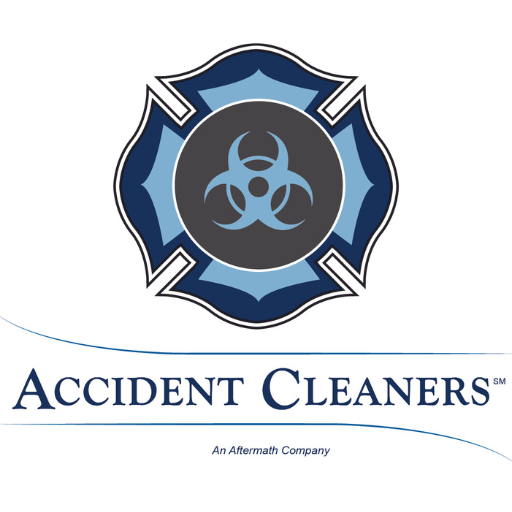Cleaning up a crime scene doesn’t just happen in the blink of an eye, and it takes a whole lot more than mere bleach and water can fix. Aside from the safety aspects, cleaning up a trauma or crime scene can take hours to decontaminate. That’s not even taking into consideration restoration of the home. Here’s some of the messy insights involved in cleaning up after a crime and trauma scene.
First off, Blood Can Kill.
It’s no laughing matter. Blood borne pathogens such as hepatitis and HIV can have lifelong affects. Some can even kill. When individuals come in contact with blood, there’s always potential dangers. Because of which, professionals in the field of crime scene cleanup must uphold the highest standards towards safety. This includes a dire need for personal protective equipment. Gloves aren’t enough! Before ever going into a scene where there’s potential blood or other hazardous material, all personnel must suit up to completely protect themselves from harmful exposure to the elements.
The Overbearing Heat
These suits get hot! Sure, they do a great job at keeping dangers at bay, but they also hinder the circulation requirements that our skin needs to breathe and expel heat. Imagine how hot your body would get if you covered yourself completely, head to toe, in saran wrap or large plastic bags. This is even a common method for sweating out toxins. But for bioremediation experts, they have no choice. Even during Florida’s scorching summers, they are required to be completely suited up for their protection.
After a while, technicians must strip off their suites to let their skin breathe and cool off. It’s not uncommon to find gloves full of sweat during these mandatory breaks. Staying hydrated is key to performing safely on the job.
Hard-Core Cleaning Supplies
The site of a messy death poses dangers not everyone can see. In addition to the infection that can result from bloodborne pathogens, any bodily fluids that remain in porous surfaces such as flooring, walls, furniture and baseboards must be gutted. If any remnants of biohazard remain, then people can get sick months or years later. Even in a load bearing wall, if all biohazard remnants are not able to be removed entirely from the cleaning process, it must be replaced.
In thus, cleaning supplies must be able to tackle the worst. We use hospital-grade disinfectants to wipe and scrub up every drop of blood that can be seen and even areas of blood that aren’t detectable with the naked eye. The remediation process includes detection chemicals that help us locate biohazards and remove them. Enzymes also help where bleach alone can’t. Once our detection chemicals no longer pick up the trace, then we considered the area decontaminated. The area must be truly clean, not just visibly clean.
Body Part Removal
It’s not uncommon to find skull fragments or brain matter left behind after a body’s been removed from the home. On top of detecting blood and bodily fluids, we’re also constantly on the lookout for bits and pieces that could have been missed from medical experts. The last thing families need to find after they move back into the home are body part fragments from their loved one. Bioremediation technicians have been known to have to scrape brain matter off of walls and collect bone fragments from drywall in order to remove all potential threats. It makes these jobs emotionally difficult. This is why it’s especially important NOT to have family members tackle a crime scene on their own. No family should ever be forced to encounter leftover tissues from a loved one.
The Awful Smell
Unless you use professional grade equipment that can handle removing the odor of death. It may linger inside the home for years to come. You can’t just spray an aerosol and hope for the best. Our restoration process includes high-end gear that breaks these odor molecules apart on a molecular level. We don’t just mask the smell. In a sense, we “bleach” the air.
The Clean Zone
Amidst the biohazard catastrophe among us, when we get to a crime or trauma scene, one of the first things we do (after we suit up) is establish a clean zone. Professionally and carefully we thoroughly investigate all areas affected by biohazard and process them out. The clean zone is where we establish our base of operations.
That’s not Normal Trash
You can’t just throw blood soaked material into a trash can. Generating and transporting biohazard requires special permits in the state of Florida. So, unless you have less than a garment or two soaked in blood, then you’re going to need a professional bio restoration company to help.
Sticker Shock
Biohazard cleanup costs more than a normal cleaning service, but the good part is that homeowner’s insurance will oftentimes cover the loss. If a family faces such turmoil, then make sure the company you refer is compliant with state and federal mandates so that insurance companies can honor the claim and not leave the families with the bill.
For more information on proper qualifications. Read more on Accident Cleaner’s Qualifications here. https://accidentcleaners.com/why-accident-cleaners/qualifications/
Discovery Can Occur at any time
Even at 3 a.m. on a rainy Tuesday. Professional cleanup must be available 24/7 to keep families safe. Once a scene has been discovered and police have released the scene from investigation, it’s important to contact qualified personnel immediately.
WHERE TO TURN
Since 1999, families have placed their trust in us to remediate their home and to protect them from harm. Cleaning up a crime scene is never easy emotionally or physically, but our team of trained technicians have the knowledge, skills, equipment and compassion needed to lessen the burden placed on families.
We pledge to treat your family as our own. From discovery to completion- above service, beyond compassion, 24 hours a day.

